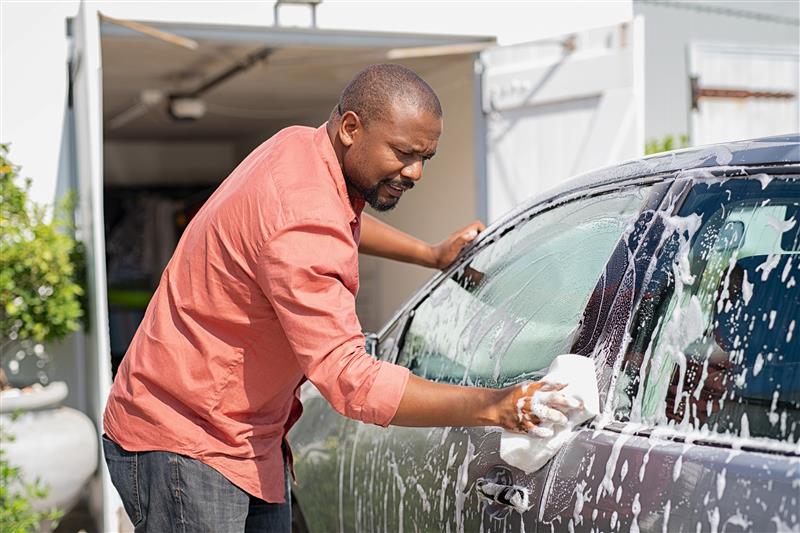
Keeping your car clean protects its appearance, paint, and finish. But does water temperature matter when washing your car? Although it seems minor, choosing hot or cold water affects how easily dirt washes away and influences the durability of your car's paint over time. Here’s a breakdown of the pros and cons of rinsing with hot versus cold water to achieve the cleanest results without risking damage.
How Water Temperature Affects Your Car Wash
Water temperature influences how effectively dirt, grease, and contaminants loosen from your car’s surface. Warm water helps break down grime, oils, and residues quickly, while colder water can struggle to dissolve tougher buildup. However, excessively hot or cold water may harm your car’s finish and appearance.
Pros and Cons of Washing Your Vehicle with Hot Water
Hot water is known for its superior cleaning power, especially when breaking down grease, bird droppings, and stubborn grime. But there are downsides to consider before you crank up the heat.
|
✅ Pros |
❌ Cons |
|---|---|
| Breaks down grease and oils easily |
Can strip protective wax layers |
| Quickly removes winter salt and ice |
Risk of thermal shock to paint/glass |
| Reduces scrubbing effort and scratches |
Quick evaporation causes streaks in hot weather |
When Hot Water is Best:
● If removing oily residues like tar, grease, or bird droppings
● When cleaning in winter to tackle road salt, ice, and heavy grime
When to Avoid Hot Water:
● On extremely cold days (risk of cracking glass or damaging paint)
● On hot summer days (to avoid streaking or rapid evaporation)
Pros and Cons of Washing Your Vehicle with Cold Water
Cold water provides a safer, gentler option for your car’s exterior surfaces, but it’s not without tradeoffs, especially when facing tough grime or cold weather conditions.
|
✅ Pros |
❌ Cons |
|---|---|
| Gentle on paint and wax coatings |
Struggles with grease, tar, and stubborn grime |
| Minimizes the risk of glass cracking |
Requires more scrubbing effort |
| Reduces streaking in hot weather |
Difficult to use in winter (freezing risk) |
When Cold Water is Best:
● When washing cars with delicate paint finishes or fresh wax
● If cleaning vehicles in hot weather, to avoid streaking
● When protecting glass from thermal shock and cracking
When to Avoid Cold Water:
● If removing heavy grease, tar, or harsh contaminants
● When cleaning during frigid temperatures (due to freezing and reduced effectiveness)
Why Lukewarm Water is Ideal for Washing Your Car
Lukewarm water, around 100°F (38°C), hits the sweet spot between hot and cold, providing effective cleaning without the risks associated with extreme temperatures.
Benefits of Lukewarm Water:
● Better Cleaning Power: Removes grease, dirt, and grime more effectively than cold water, making the washing process quicker and easier.
● Protects Paint and Wax: Mild enough to keep your car’s protective coatings intact, preventing paint damage or wax removal.
● Safe Year Round: Reduces the risk of thermal shock or streaking, making it safe and practical to use in both hot summers and cold winters.
If you want clean results with minimal risks, lukewarm water is the best bet for washing your car safely and effectively.
Additional Car Washing Tips for Spotless Results
No matter which water temperature you prefer, following these essential car washing techniques ensures you achieve a spotless finish without risking damage to your paint:
● Use the Two Bucket Method: Fill one bucket with high-quality, pH-balanced car wash soap and water, and another with clean water for rinsing your wash mitt or sponge. This method prevents dirt from recontaminating your wash tools.
● Pick the Right Soap: Avoid household detergents, which strip wax and harm your paint. Choose a dedicated car wash shampoo formulated specifically to protect automotive finishes.
● Use Microfiber Towels or Wash Mitts: Microfiber materials gently lift dirt off the surface, helping to avoid scratches or swirl marks.
● Wash from Top to Bottom: Starting at the top prevents dirty water from running onto already cleaned areas, making your wash more efficient and effective.
● Rinse Completely: Thoroughly rinse away all soap residue to prevent streaking and water spots.
● Dry Properly: Use a soft microfiber drying towel or an air blower to remove water quickly, ensuring your car dries spot-free.
For a more detailed, step-by-step guide on washing your car correctly, check out our article: How to Wash Your Car at Home.
Choose Your Water Temperature Wisely for a Cleaner Car
The ideal water temperature for washing your car depends on your needs, but lukewarm water strikes the best balance for most drivers. Hot water tackles tough grime but can damage paint or glass, while cold water is gentler yet less effective on stubborn dirt. By choosing lukewarm water and following proper washing techniques, you'll confidently protect your car’s finish and achieve a sparkling clean. Dial in the right temperature, and drive spotless every time.



